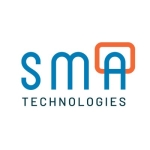What is our primary use case?
I work for a software solution company, and its use cases are related to HR products.
How has it helped my organization?
UiPath enables us to implement end-to-end automation. We also tried a few payroll automations as a part of our software solution, and it worked perfectly. All the features, UI elements, and processes work well. It is very good. We were able to automate about 80% of the tasks or processes by using UiPath. It is a great platform for automation.
UiPath has reduced human error. It has reduced time for a task. We were able to reduce 80% of a task. We have automated 80% of the task using UiPath, and we were able to save six hours per user for one project.
UiPath frees up the employee time. After we have the software in place, we can see where we can speed up our processes. If a process can be completed in less duration, that also saves the time of the employee. So, it is a journey. You need to keep identifying the processes to improve. The time savings vary based on the process. For example, we use RPA for the HR payroll, and for 200 employees, we were able to save 6 hours. The savings will be more when you have more people.
What is most valuable?
The most valuable feature of UiPath is the speed of the implementation. They are continuously adding new features, and there is also fast deployment. It is easy to use. Before going for the enterprise license, we evaluated the capability to automate certain processes and get the outcome that we expected. UiPath has so many advantages, but we struggle in terms of investment and price.
I have used the UiPath Academy for business analyst certification. It is very helpful to understand the tools and features to meet any requirements. You get to learn what are the things that you have to follow. From the business analysts' side, you get to know how to identify the processes where automation can be used. You can identify the automation capabilities. UiPath Academy nicely guides people who are new to RPA. There are so many things to learn on the RPA side. The developers can identify the gaps and learn how to automate quickly and learn new skills. UiPath Academy helps people to understand automation from start to end.
What needs improvement?
On the investment side, it is a huge investment, especially with the current situation in Sri Lanka. If they can reduce the price or provide affordable packages, it will be very helpful.
On the development side, there are already so many new capabilities. They are also adding more AI capabilities. I have seen some of the users using AI tools, but I have not worked on them much.
For how long have I used the solution?
We have been using UiPath for the past two years.
What do I think about the stability of the solution?
Its stability is nice. We get regular updates throughout the year, and we have to install those updates, which is not a huge thing for us. We have not had any issues with that. I would rate it a nine out of ten in terms of stability.
What do I think about the scalability of the solution?
It is scalable. I would rate it a nine out of ten in terms of scalability.
We use automation in different departments, and we are also planning to deploy some RPA use cases in the client environment. Currently, we have 280 users using payroll automation.
How are customer service and support?
The technical support team from the reseller has been very engaged with the RPA effort. They have helped us with the cons and pros and to identify the capabilities of UiPath using the UiPath community version. They helped us a lot with our RPA journey.
Which solution did I use previously and why did I switch?
I have worked with Automation Anywhere and UiPath, and I am now also using Power Automate. I used Automation Anywhere at my previous workplace, and at my current workplace, we have been using UiPath, but we are now also using Power Automate. We were using IQ Bot to identify invoices and process those invoices for the finance team. We have been using UiPath for HR and payroll automation.
In terms of ROI and investment, in Asian countries, such as Sri Lanka, we are unable to get a huge return on investment because of the price. We were looking for a solution with less investment and getting more automation, so we picked Power Automate for automation.
How was the initial setup?
I was working as a project manager and consultant. I was involved in gathering requirements in detail and creating the processes. I acted as a bridge between the development team and business owners.
It was a straightforward process. We took two days to set up the process. In terms of the implementation strategy, we identified the use cases for automation. Business owners were responsible for coming up with the use cases and identifying the feasibility and the return on investment for using RPA. We went through each project brought to the table and identified some of the critical scenarios.
What about the implementation team?
In my previous company, we got consultants from Automation Anywhere because that was the first time we were using RPA in our company. It was 2017 or 2018. They helped us in identifying processes, gathering details, and selecting processes for RPA. They were very helpful. Their developers also helped us debug the processes and improve the speed of the processes. They helped to identify the gaps in automation flow and enhance it.
From the development side, there were two developers and a project lead. There were also two subject matter experts or business owners, so altogether, there were five people.
For maintenance, one person is enough.
What was our ROI?
UiPath could not save us money because the cost of the bot license and the Studio license is high. For Asian countries, such as Sri Lanka, it is a huge amount.
We have been using the community version to identify the automation capabilities. We are also trying to sell the RPM modules to our clients who use our payroll process. When it came to purchasing, there was a huge difference in the price of Automation Anywhere and UiPath as compared to Power Automate, so we went for Power Automate.
What's my experience with pricing, setup cost, and licensing?
It is expensive for our country. Other than that, we do not have any issues with UiPath.
Which other solutions did I evaluate?
Most companies evaluate Automation Anywhere, UiPath, and Power Automate. Development speed, user-friendliness, and price are some of the factors that companies look at while evaluating a solution. UiPath helps with fast development, and it is user-friendly. There is also a community version to understand its capabilities before purchasing the license.
Both Automation Anywhere and UiPath require a big investment. Companies based in European countries get a good return on investment, but most companies based in Sri Lanka do not get a good return on investment because the cost is very high.
What other advice do I have?
To those who want to use UiPath, I would advise understanding what digitization is and how RPA can help with their digitalization journey. Before using RPA, they have to standardize their processes in terms of the process flow. We encourage people to identify those gaps before using RPA. They should also select processes that provide a good return on investment. They can use the community version of UiPath to identify the processes.
Overall, I would rate UiPath a nine out of ten.
Which deployment model are you using for this solution?
Private Cloud
If public cloud, private cloud, or hybrid cloud, which cloud provider do you use?
Microsoft Azure
Disclosure: My company does not have a business relationship with this vendor other than being a customer.





















